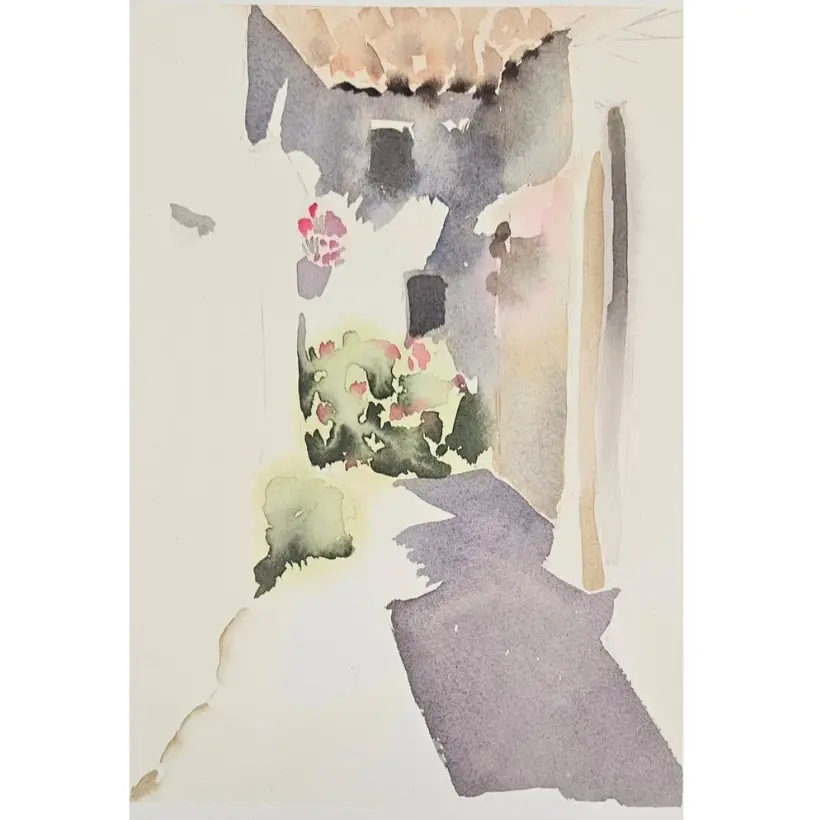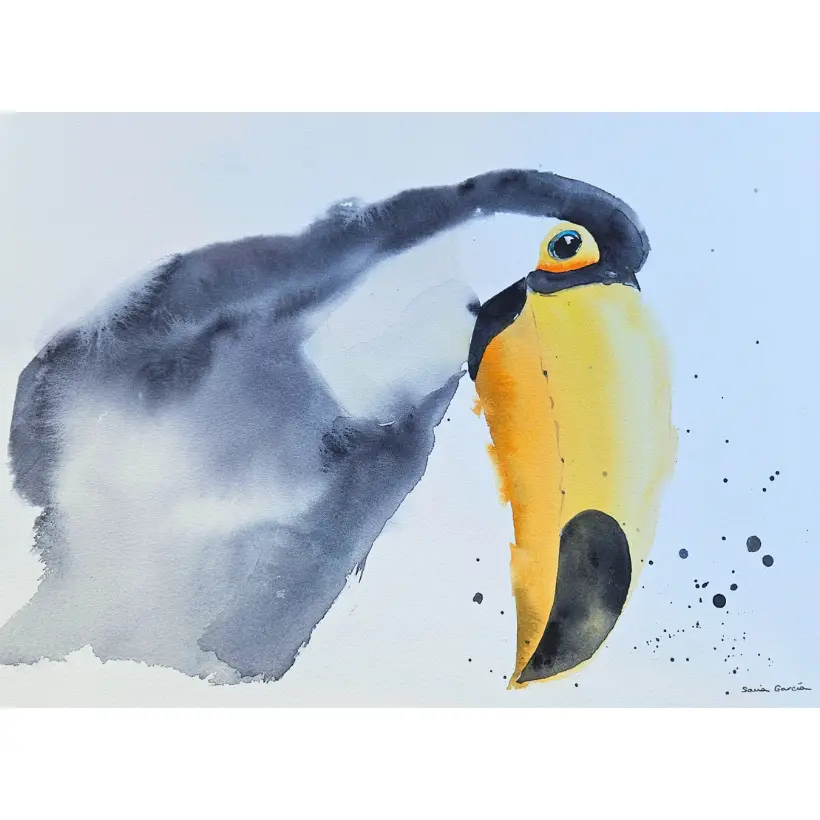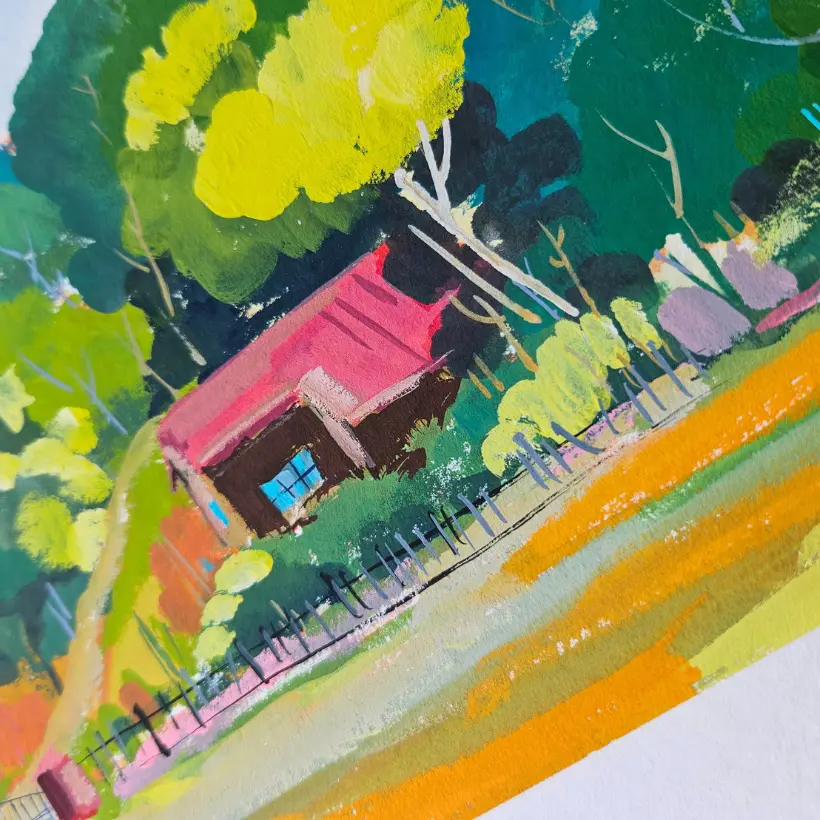Hola!!. Ha llegado el momento de presentaros mis materiales favoritos para acuarela en cuanto a papel, pinceles y colores. Como sabéis, cada pintor tiene una forma diferente de escoger sus materiales en función de sus necesidades. Yo os voy hablar de los que yo utilizo en estos momentos y que me da las soluciones que necesito. Lo más importante es estar cómodo a la hora de pintar y conocer en profundidad todos los recursos de que disponemos.
Empezamos!!
PAPEL
Fundamental un papel de 300g, 100% algodón, trabajaremos, sobre todo, con grano fino. Os recomiendo el papel de Sennelier que nos va a proporcionar unas manchas delicadas y no se pierde color. Lo podéis encontrar en bloc o en hojas sueltas que podéis cortar al tamaño que queráis. Un bloc de 30×30, 36×26 o 31×41 será perfecto.
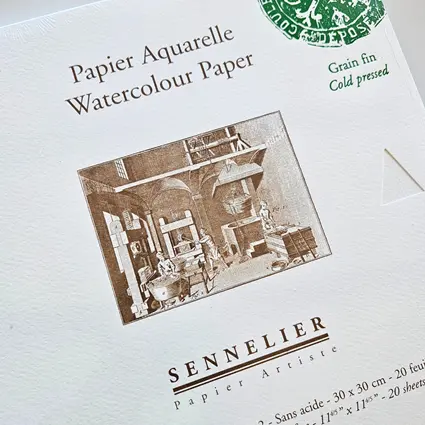
PINCELES
Mi elección principal es Raphel SoftAcqua en forma redonda, son pinceles sintéticos que imitan el pelo natural Petit Gris. Es importante tener al menos 3 pinceles: uno redondo tipo MOP que cargue bastante agua y color, otro redondo más de detalle y un liner o pincel rigger o delinear para líneas más finas y precisas, de este último me gusta el Design de Raphael. Cada marca pone unos números diferentes a cada tamaño (casi es como las marcas de ropa). Yo os recomiendo estos, creo que os van a gustar mucho y os van a permitir hacer muchos tipos de pincelada:
- Raphael Softaqua pincel sintético tipo petit gris serie 845 nº 8
- Raphael Softaqua pincel sintético tipo petit gris serie 805 nº 4
- Raphael Design redondo serie 88026 nº 4 (liner)
(la foto no se corresponde a los números, pero sí aproximadamente a las formas para que os hagáis una idea. Os pasaré una foto actualizada porque estoy en plena reposición de pinceles y tienen que llegarme nuevos, así los veis bonitos :))
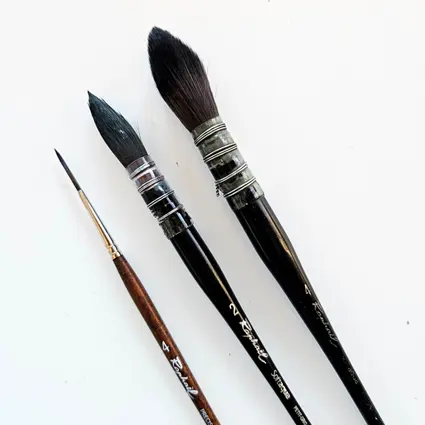
COLORES
Seleccionamos una gama de color acorde a nuestra forma de trabajar: por valores tonales y por temperatura para crear volúmenes, perspectivas atmosféricas y sombras y luces, así que mi paleta básica contiene colores que nos van a resolver todas las mezclas que necesitamos. A medida que vayamos avanzando, podemos incluir algún color más que nos resulte interesante para algunos temas, pero la paleta básica es:
AMARILLOS: Limón (como amarillo frío) e Indio (como amarillo cálido).
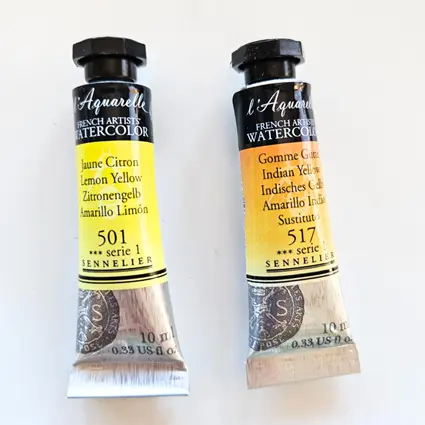
AZULES: Ultramar y Cobalto como azules que vamos a considerar como más cálidos y Cerúleo como azul frío.
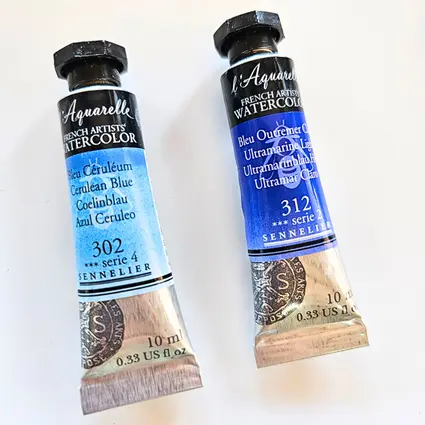
ROJOS: Magenta o Carmín como rojo frío y un rojo Sennelier o un rojo de cadmio.
TIERRAS y GRIS DE PAYNE: Necesitamos tener Ocre Amarillo, Burnt Sienna y Payne´s Grey. El Ocre Amarillo y el Burnt Sienna son imprescindibles para mí y, en especial, el Burnt Sienna para crear grises con los azules. No utilizo negro en acuarela ni blanco.
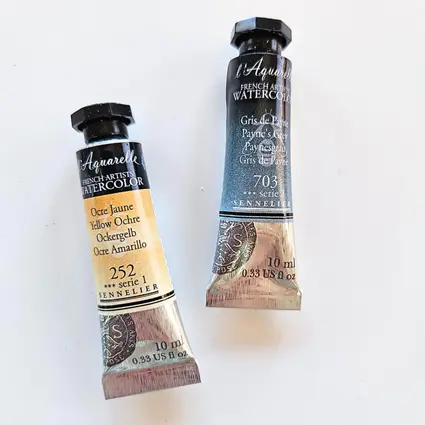
Elementos accesorios son: dos botes para el agua, cinta de carrocero, papel suave de celulosa, lápiz HB, goma de borrar y goma de enmascarar.
ENGLISH
Hello!!. The time has come to present you my favorite materials for watercolor in terms of paper, brushes and colors. As you know, each painter has a different way of choosing his materials according to his needs. I am going to talk about the ones I use at the moment and that give me the solutions I need. The most important thing is to be comfortable when painting and to know in depth all the resources available.
Let’s start!
PAPER
Fundamental a 300g paper, 100% cotton, we will work, above all, with fine grain. I recommend Sennelier paper that will provide us with delicate stains and does not lose color. You can find it in pads or in single sheets that you can cut to the size you want. A 30×30, 36×26 or 31×41 pad will be perfect.
BRUSHES
My main choice is Raphel SoftAcqua in round shape, they are synthetic brushes that imitate natural hair Petit Gris. It is important to have at least 3 brushes: a round MOP brush that carries enough water and color, another round brush for detail and a liner or rigger brush for finer and more precise lines, of the latter I like the Raphael Design. Each brand has different numbers for each size (almost like clothing brands). I recommend these, I think you will like them a lot and they will allow you to make many types of brushstrokes:
- Raphael Softaqua synthetic brush type petit gray series 845
- Raphael Softaqua synthetic brush type petit gray series 805
- Raphael Design round series 88026 nº 4 (liner)
COLORS
We are going to work by tonal values and by temperature to create volumes, atmospheric perspectives and shadows and lights, so my basic palette contains colors that will solve all the mixtures we need. As we go along, we can include some more color that we find interesting for some subjects, but the basic palette is:
YELLOW: Lemon (as cool yellow) and Indian (as warm yellow).
BLUES: Ultramarine and Cobalt as blues that we are going to consider as warmer and Cerulean as cool blue.
REDS: Carmine or Magenta as a cool red, a warm red such as a Cadmium Red or Vermilion which can be substituted for a Sennelier Orange, and we can add a Sennelier Red to have 3 different shades.
PAYNE’S GRAY and Earth: We need to have Yellow Ochre, Burnt Sienna and Payne’s Grey. Yellow Ochre and Burnt Sienna are a must for warm blends, and especially Burnt Sienna to create grays with the blues. I do not use black in watercolor or white.
Accessories are: two water bottles, masking tape, soft cellulose paper (like toilet paper), HB pencil, eraser and masking gum (although we will use it very little).

